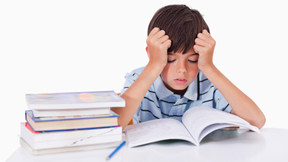Assessing Reading Difficulties

In this section you will develop an understanding of different reading difficulties that students encounter. You will be using a document, "Target the Problem", to look at descriptions of symptoms from student, parent and teachers along with 'What I can do to help' suggestions.
From this activity you will identify a student (or two) you work with that has reading challenges to focus on. You will create an artifact that identifies the problem and a list of some action ideas (from your own experience, from suggestions from the document, and brainstormed ideas) to address the problem.
In the next sections that follow you will be exploring a variety of technology apps and resources that could help address the struggles of the student(s) you identify.
Steps:
1. Download and refer to this PDF document "Target the Problem" from ReadingRockets.org.
2. Think about the students you work with as you read the perspective descriptors from a student, parent, and teacher perspective.
3. Read through each of the different sections and identify any students you feel have one or more of these challenges: Phonological and Phonemic Awareness, Word Decoding and Phonics, Vocabulary, Fluency, Comprehension, and Other Sources.
4. Pick one or two students that seem to have one or more of these difficulties to create an artifact (table, spreadsheet, organized notes) where you will:
- list their first name(s) or initials
- identify behaviors they or their parent report and that you have observed
- list helpful suggestions: from the document and from your own experience, research, or thoughtful ideas
5. Review some of the additional resources in the following content block below that can provide further insight and add to your artifact.
Additional Resources
Recommendation: Plan your time so that you spend no more than 30 minutes on these resources. You can always return again later.
What are the symptoms of reading disorders, from the US Department of Health and Human Services and NIH.
11 Characteristics of Struggling Readers, from Oxford Learning
Early Signs of Reading Difficulty, from Reading Rockets
Why Some Kids Struggle, 6 reasons why kids might struggle with reading, from Reading Rockets
Looking at Reading Interventions for K-3, a video series from Reading Rockets
Move on to Reading Supports
Addressing the ISTE Standards For Educators
Learner
Educators continually improve their practice by learning from and with others and exploring proven and promising practices that leverage technology to improve student learning.
Leader
2b. Advocate for equitable access to educational technology, digital content and learning opportunities to meet the diverse needs of all students.
2c. Model for colleagues the identification, exploration,
evaluation, curation and adoption of
new digital resources and tools for learning.
Designer
5a. Use technology to create, adapt and personalize learning experiences that foster independent learning and accommodate learner differences and needs.
5b. Design authentic learning activities that align with content area standards and use digital tools and resources to maximize active, deep learning.
5c. Explore and apply instructional design principles to create innovative digital learning environments that engage and support learning.
Analyst
7a. Provide alternative ways for students to demonstrate competency and reflect on their learning using technology.
